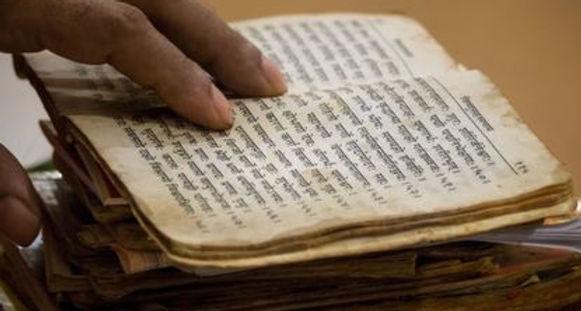Author: Randeep Singh / go to all Samkhya Karikas

Samkhya Karika 4 text:
Drstam anumaanam aaptavachanam cha sarva pramaana siddhatvaat |
Trividham pramaanam ishtam prameya-siddhih pramaanaad hi ||
Drstam – Perception with all the senses
Anumaanam – inference
Aaptavachanam – verbal or written testimony, authentication of authority figure
Ca – and
Sarva – all
Pramaana – sources or proofs of valid knowledge or cognition
Siddhatvaat – proved accomplishment
Trividham – triad, three
Pramaanam – sources, proofs of knowledge that are valid and non-challengeable
Istam – desired, preferred
Prameya – Object about which knowledge is required
Siddhih – established successfully, proved
Pramaanaad – from proofs or valid sources of knowledge
Hi – Therefore
This Sankhya karika 4 discusses how does one prove that Samkhya philosophy, and for that reason any philosophical propositions are true and valid. What is the proof of 25 elements on which Samkhya philosophy is based, why should any one believe in these propositions? It is significant to establish the sources of gaining true knowledge in any philosophical enquiry. Indian epistemology (branch of philosophy that investigates the origin, nature, methods, and limits of human knowledge) uses the term pramana (proof) to describe how one can check the validity of the sources from where any knowledge – seen or unseen – is derived.
The Three Pramana (proofs) which Validate Samkhya
Indian philosophy has accepted a number of proofs ( pramana) against which the validity of the given knowledge can be checked. Three of which are direct perception (Drstam), inference (anumaanam) or deducing the facts by applying logic, and the valid testimony of the trustworthy persons (aaptavachanam). Yoga philosophy also talks about the same three primary pramana to acquire valid, irrefutable, and indisputable knowledge of anything.
All the other pramanas (proofs) as mentioned in other systems of philosophy can be reduced to these main three. Perception means seeing things with one’s own eyes and then believing that they exist. The five senses of cognition play their role in establishing the truth of existence of something or some knowledge. Such a truth can be believed as real. It is like seeing a bed, or a flower and establishing its presence as true, or since the senses can perceive its existence is valid and true.
Inference, the second valid mode of establishing the truth in philosophy, means that the valid ruth can be deducted from deducting, inferring from what is being perceived by the senses. For example, if one sees an overcast sky with dark clouds making thunderous noise one can deduce that it is about to rain. Still, there are things which one cannot perceive with one’s senses and also do not know anything about them, how do one establish that they actually exist so that one can believe in them?
It is mentioned in Indian philosophy that in such cases one should believe as true anything that has been verbally put forward by some authority on the subject like any saint, or something that is written in the scriptures by the figures of authority on that subject. One has never seen or heard about such things but one believes in them because they have been said, or written by some enlightened souls in the holy scriptures. Likewise, Samkhya as a system of philosophy is supported by such proofs (pramana).
Sankhya is the Path to Conquer all Suffering | Samkhya Karika 4
Sankhya karika 4 introduces the systematic epistemological approach to Samkhya philosophy in the quest to find permanent solution to the sufferings of the being. Despite the establishment of these proofs that philosophy and nature of the 25 elements of Samkhya one rarely understands them and continue suffering. Understanding of the nature of a person helps one to base deal with the person accordingly, but humans, despite of this knowledge being available to them do not abide by its rules in order to avoid pain.
The flaw in one’s thinking is clear when one gets agitated or anguished when a favourite of one’s material object – may be a pot – breaks due to someone else mishandling of it. One loses the reality, as proposed by the concept of 25 elements of Samkhya, and reacts as if, if not for mishandling by the other person it would have never broken, or vanquished at all till eternity.
In reality one is not only ignorant but foolish too, as one grows one’s ego also grows and on the contrary one’s intelligence shrinks and becomes less sharpened. The problem is that one is neither one is aware of it and nor does one accepts this fact. Samkhya proposes that one does not even have to rely on one’s intelligence too but discover the ultimate reality present beyond intelligence, known as Purusha.
Samkhya philosophy, if adhered to, promises to take one beyond the grip of 23 elements and help one realize Purusha, the ultimate bliss.
